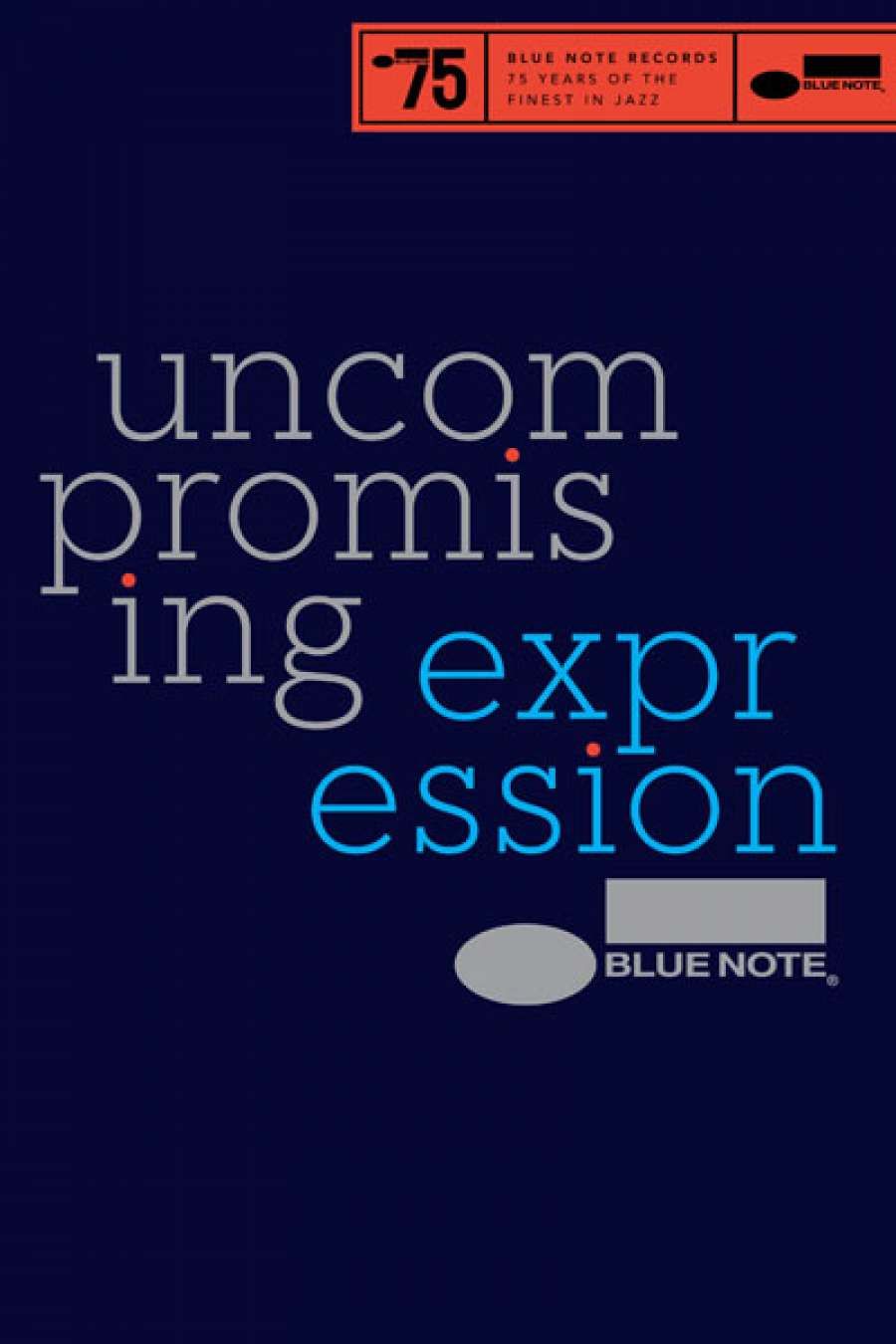
- Free Article: No
- Contents Category: Music
- Custom Article Title: Peter Kenneally reviews 'Blue Note' by Richard Havers
- Book 1 Title: Blue Note: Uncompromising Expression - The Finest in Jazz Since 1939
- Book 1 Biblio: Thames & Hudson, $95 hb, 400 pp, 9780500517444
Alfred Lion, a Jewish refugee from Germany, arrived in New York in 1928, already keenly interested in jazz. He was also interested in art, and generally progressive. In 1939, just as Lion founded Blue Note, his friend Francis Wolff arrived: he would run Blue Note with Lion, and his photography would be an essential ingredient of its success.
The first label design, modernist, instantly recognisable and hardly changing over the years, was the first sign that Blue Note’s impact and legacy would be as much visual as musical. It was at this time that the famous ‘manifesto’ was issued: ‘Blue Note Records are designed to serve the uncompromising expressions of hot jazz, or swing. Direct and honest hot jazz is a way of feeling, a musical and social manifestation, and Blue Note records are concerned with identifying its impulse, not its sensational and commercialised adornments.’ The book tries valiantly to make Blue Note live up to this dictum, but the strain begins to show at the end.
‘Direct and honest hot jazz is a way of feeling, a musical and social manifestation, and Blue Note records are concerned with identifying its impulse’
Wolff certainly followed his inclinations even when uncommercial, most notably giving Thelonious Monk his first opportunity to record in his own right, in 1952. Monk only made two records for Blue Note. Reading the book, one realises that the ground-breaking jazz artists are only present in passing, if at all. Miles Davis recorded with Blue Note in the early 1950s, but to no great effect, his most notable Blue Note appearance being as band member on Cannonball Adderley’s Something Else (1958). John Coltrane made only one album for the label, the much-loved Blue Trane. Sonny Rollins was briefly present. No Charles Mingus at all. There are some exceptions – Cecil Taylor’s Unit Structures (1966) is one – but over-all the impression is inescapable.
The heart and soul of Blue Note were the straight-ahead hard bop ensemble men who could get in a groove and drive it, as well as exploring freer expressions. ‘Hard bop’, the label’s trademark style, can include soul, blues, gospel, Latin, or funk, increasing the accessibility of Blue Note’s output from the mid-1950s onwards. It is no accident that the quintessential Blue Note artist, Art Blakey, was a drummer, or that Jimmy Smith, almost pure groove, was one of their most prolific and lucrative artists.
It was in the mid-1950s that Reid Miles’s distinctive cover designs first appeared. Often using Francis Wolff’s photographs, with distinctive typography and often a blue or red wash, or stark black and white, there is no doubt that Miles was as much a star as the artists themselves. He is certainly the star of this book.
Looking at page after page of memorable albums with recognisable covers, Lion and Wolff’s achievement drives itself home: Herbie Hancock, Lee Morgan, Grant Green, Dexter Gordon, Freddie Hubbard, all timelessly preserved at maximum cool. As the 1960s wore on, Blue Note became a victim of changing tastes, and was sold to Liberty records in1966. Lion retired from Blue Note a year later, Reid Miles withdrew, and the label entered into a depressing era of corporate to-and-fro and of trying to be relevant, before becoming effectively dormant in 1977.
‘Herbie Hancock, Lee Morgan, Grant Green, Dexter Gordon, Freddie Hubbard, all timelessly preserved at maximum cool’
Havers makes no bones about the sad state of affairs that prevailed then, before the label began a long climb back to success following an increasing demand for both CD and vinyl re-releases, and with the boost given by acid-jazz and hip-hop artists sampling and remixing Blue Note records. What Havers brings out is that it was the 1970s Blue Note records, full of funk and fusion, and so often reviled by the technique-obsessed, ‘neo-classical’ bop revivalist faction in jazz, personified by Wynton Marsalis, that have had the most impact on these new artists. Donald Byrd, in particular, is hugely influential and has had the last laugh on his detractors.
This is an example of where the author’s desire to find the positive gives artists their due, but at the end of the book, firmly on the company clock, Havers scrabbles for superlatives, saying bathetically that one recent release is ‘as groovy as heck’. He does his duty, but the tone becomes increasingly hysterical, such as when he feels obliged to lambast the critics of Come Away With Me by Norah Jones, which, at twenty-five million copies and counting, is the Frampton Comes Alive of jazz, and is absolutely no one’s idea of ‘uncompromising expression’. There are some impressive artists on the roster: Gregory Porter and Cassandra Wilson stand out, especially Robert Glasper’s determination to reinvigorate and reinvent jazz. It is a fine thing that Blue Note has been resurrected by people like Michael Cuscuna and Don Was, full of enthusiasm for its history: but it is just another record label now.


Comments powered by CComment